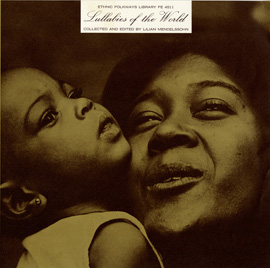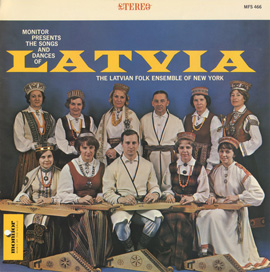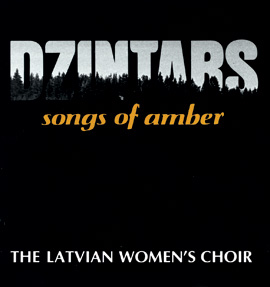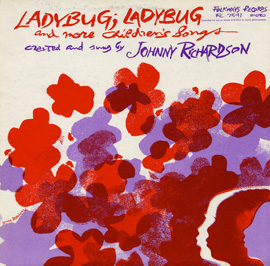Summary
In this series of three lessons, students will engage with Latvian folk music, culture, and history through critical listening, singing, movement, dance, and instrumental performance. They will also learn about the Baltic Singing revolution and power of music in effecting social justice.
Suggested Grade Levels: 3–5; 6–8; general music or choral
Country: Latvia
Region: Eastern Europe/Baltic States (Estonia, Latvia, Lithuania)
Culture Group: Latvian
Genre: Folk music of Latvia, vocal music, children’s music
Instruments: Voice, kokles, three woodwind instruments
Language: Latvian
Co-Curricular Areas: Social studies, history
National Standards:
Lesson 1: 1, 3, 4, 6, 7, 8, 9
Lesson 2: 1, 2, 5, 6, 7, 8, 9
Lesson 3: 2, 3, 4, 6, 9
Prerequisites:
Lesson 1: None
Lesson 2: Singing, part-singing.
Lesson 3: Understanding of difference between 3/4 and 4/4 meters
Objectives:
Lesson 1: Students will:
- Learn to dance and sing an unfamiliar song from Latvia in unison with the refrain in two parts.
- Experience faster and slower tempi and alternating between the two in movement and in song.
Lesson 2: Students will:
- Learn to play and sing an unfamiliar song from Latvia in three parts.
- Engage in discussion about music and social justice.
Lesson 3: Students will:
- Analyze and listen critically to basic polyrhythmic music (3-against-4)
- Play, move, and compose their own original composition in this polyrhythm (3-against-4).
Material:
Lesson 1:
- Recording of “Kalabadi Galiņami (The Table),” found on the Smithsonian Folkways album The Latvian Folk Ensemble of New York Vol. 2
- Map of Europe (can be accessed under Creative Commons use on Flickr)

Lesson 2:
- Recording of “Gaismiņa Ausa (The Dawn),” found on the Smithsonian Folkways album The Latvian Folk Ensemble of New York Vol. 2
Lesson 3:
- Recording of “Apalais Meness (The Round Moon),” found on the Smithsonian Folkways album The Latvian Folk Ensemble of New York Vol. 2
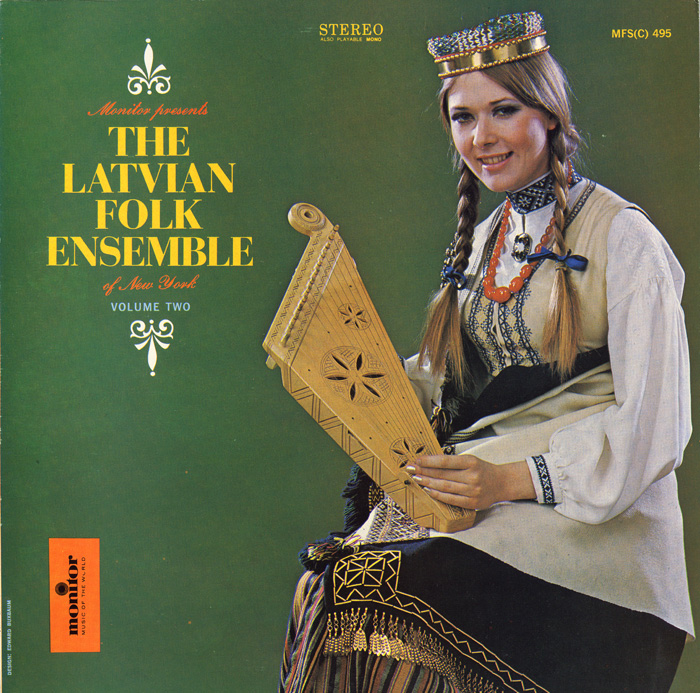
“Kalabadi Galiņami (The Table)”
from Latvian Folk Ensemble of New York, Vol. 2 | MON00495
“Gaismiņa Ausa (The Dawn)”
“Apalais Meness (The Round Moon)”
Lessons:
- Let’s Dance! (National Standards 1, 3, 4, 6, 7, 8, 9)
- Light at the End of the Tunnel (National Standards 1, 5, 6, 7, 8, 9)
- Weaving Rhythms (National Standards 1, 2, 3, 6, 7, 8, 9)
Lessons 1. Let’s Dance!
- Attentive listening: Students listen to recording “Kalabadi Galiņami (The Table)” (0:00-1:15). Listen with the following questions in mind:
- What instruments do you hear? (Kokles—a type of plucked string instrument in the zither family, three woodwinds, voices)
- How does the music make you feel?
- Attentive listening: Students listen to recording again with the following questions in mind:
- Is the whole song in the same tempo? (Tempo acceleration at refrain)
- Who is singing this song? What is their gender? How old do you think they are? (Adult female singers)
- Can you hear different voice parts? Do you hear any harmonies? (Unison in beginning; splits into voice parts at 00:53)
- Engaged listening: Students tap the basic pulse on their knees and accelerate with the music when appropriate. They stand up when the voices sing and sit down when the voices do not sing.
- Integrating world music:
- Students guess song’s geographic origin, first by continent and then by process of elimination establishing that it is in Eastern Europe.
- Teacher informs them that it is from Latvia, in Eastern Europe. Teacher informs students that Latvia is a country with two million people and that singing is very important to Latvian people. They are very proud of their music and dance and hold big festivals every five years, where choirs with as many as fifteen thousand singers sing together and thousands of dancers dance together while the audience of about thirty thousand people listen and sing along. After the formal concert (about five to six hours long), everybody sings and dance throughout the night until the sun comes up the next day. These festivals are held in big stadiums (like sport stadiums) built just for this festival. Children and adults all participate in these song festivals.
- Teacher tells students that this song, as per the liner notes, is a “table song,” a genre of music originated by children who were tired of sitting at the tables full of food and would get up to start singing and dancing.
- Attentive listening: Students listen to the recording again with the following questions in mind:
- Teacher sings hums 1-2 on the syllable la then asks the students to listen to the recording. How many times does the pattern repeat?
- Are both pieces in the same language or in any language at all? (First part in Latvian, second part in madrigal-like syllables, similar to fa la la la in ”Deck the Halls”)
- Engaged listening:
- Students sing the madrigal section (tradaridi ramtai ridiri…) while clapping the main pulse.
- Students learn basic dance/game. Students line up in two rows facing each other. For instrumental introduction students stand and step from side to side on the pulse. Once the singing starts, students walk toward each other in slow steps to the half note rhythm. When the refrain/madrigal section starts, students turn in a circle by themselves or in couples linked by the elbow. Students scurry back to their original lines during the instrumental section after the refrain before repeating the exercise.
- Active listening: Teacher sings first section without recording with students clapping basic pulse. Students join and sing the refrain.
Assessment:
Students are assessed based on attentiveness, effort, and participation.
Text:
Kālabadi galdiņami līkas kājas nolīkuš’s? Kalabadi galdinyami likas kayas nuolikush?
Trādiridi, ramtai ridiri, ramtai ridiri ral la la
No maizītes nolīkušas, nenozelta sudrabiņ’. Nuo maizites nuolikushas nenuozelta sudrabiyn.
Trādiridi, ramtai ridiri, ramtai ridiri ral la la
Translation:
Why are the legs of the table bending? Tradiridi ramtai ridiri...
It is heavily laden, not with silver or gold, but with bread. Tradiridi ramtai ridiri...

Click to enlarge
Lesson 2. Light at the End of the Tunnel
- Attentive listening: Students listen to recording of “Gaismiņa Ausa (The Dawn)” with the following questions in mind:
- What instruments do you hear? (Kokles, three woodwinds)
- How does the music make you feel? What time of the day do you think you would hear music like this? (Sleepy, calm; waking up)
- Integrating world music: Teacher explains that this is a song about the sun rising. Teacher explains that the sun is very important to populations who live near the Arctic Circle, and that the winter months don’t have much sunlight so many people create music about the sun. Teacher explains that there is a festival called “midsummer” where Latvians build big fires, wear wreaths (made from oak for men and boys, flowers for women and girls) around their heads, and then jump over the fires. People go into the forest to look for special ferns and have to stay awake until the sun comes up—otherwise, they believe they will have very bad luck until the next midsummer. At the big song festivals (discussed in Lesson 1) everybody stays up until the sun comes out, at which time they can go home. This explains why the music sounds like it is made by people who are tired or sleepy, or who are just waking up after having dozed off.
- Attentive listening: Students listen to the recording again with the following questions in mind:
- Do you hear a melody, or is there an accompaniment as well? (Melody, chords on the kokles and repeated figure in the lower woodwind)
- Active listening: Teacher demonstrates and sings solfege pitches in short phrases and students sing parts back.
- Active listening:
- Teacher shows sheet music and students play Melody Part 1 on xylophones.
- Students and teacher play Melody Part 2 on xylophone.
- Half of students play Melody Part 1 on xylophones while other half plays Part 2.
- Students switch parts.
- Active listening:
- Teacher shows sheet music with words and explains the folk tale described in the song.
- Teacher teaches words by rote to students.
- Active listening: Teacher demonstrates accompaniment chords on marimba or xylophone and students take turns playing the accompaniment and singing.
- Integrating world music: Teacher tells students that light is an important concept for Latvians because of their history. During World War II, Russia invaded many countries, which became the USSR after the war. Latvia was part of the USSR, and Latvians were not allowed to celebrate their identity. Light symbolizes justice and the hope for a “happy ending,” that one day all Latvians could speak their language, sing their songs, and govern themselves with pride. Because they weren’t strong enough to defeat their oppressors by force, they started singing at the end of the 1980s. Teacher shows students a picture of the Baltic Way (do online image search for “The Baltic Way”) and explains that Estonians, Latvians, and Lithuanians all held hands in a line over 370 miles long (!) and sang forbidden songs, at great risk to their personal safety, to prove that they had their own identity and should be able to govern themselves. This gave people hope, and they finally achieved freedom in 1991. This process was called the Singing Revolution. Ask:
- Can you think of other people who used singing to show that they were unhappy about being treated unfairly? (Civil rights movement, apartheid in South Africa, etc.)
- Who are some leaders or important people in the world who advocated for non-violent resistance instead of military resistance? (Gandhi, Jesus, Malala, Mandela, etc.)
- Do you know any other songs that have the word “light” that shows how we can set an example to be good people and make the world better? (“This Little Light of Mine,” “Siyahamba” (“We Are Walking in the Light,” etc.)
- How can you help affect change without resorting to violence? (Anti-bullying, equality, helping others, voting)
- What is your favorite song or artist that has a positive message and helps affect social justice and understanding? Share with the class the next day.
Assessment:
See if students can play (or sing) all three parts by end of session. Students’ participation in sharing point 8.e. is also assessed by effort and participation.
Text and Translation:
| Gaismeņa ausa, sauleite liece, | The light dawned and the sun rose |
| Oi, agri, agri, sauleite liece. | Oh! Early, early, the sun rose. |
| Oi, agri, agri, sauleite liec.1 | |
| Jaunais puiškinis zyrgu sad luoja, | The young boy saddled his horse |
| Oi, agri, agri, zyrgu sad luoja, | Oi, agri, agri, zyrgu sad luoj’. |
| Zyrgu sadluoja, tuoli dūmoja, | He saddled his horse with faraway thoughts |
| Oi, agri, agri, tuoli dūmoja, | Oi, agri, agri, tuoli dūmoj’. |
1 “Agri” can be translated as early, quickly, or soon, depending on the context.
Optional Verses:
| Tev, jaunais, puiškin, reis duorzi prīkšā, | You, young boy, ahead are three gardens. |
| Oi, agri, agri reis duorzi prīkšā, | |
| Oi, agri, agri reis duorzi prīkš’. | |
| Pyrmajā duorzā kiu-kuoj’ dzagiuze, | In the first garden the cuckoo cuckoo-ed. |
| Oi, agri, agri kiu-kuoj’ dzagiuze, | |
| Oi, agri, agri kiu-kuoj’ dzagiuze. | |
| Ūtra jā duorzā syt laksteigola, | In the second garden thenightingale… |
| Oi, agri, agri syt laksteigola, | |
| Oi, agri, agri syt laksteigol’. | |
| Treša jā duorzā sēd jauna meita, | In the third garden sat a young girl. |
| Oi, agri, agri sēd jauna meita, | |
| Oi, agri, agri sēd jauna meita. | |
| Jaunais puiškinis rūceņu snīdze, | The young boy reached out his hand, |
| Oi, agri, agri rūceņu snīdze | |
| Oi, agri, agri rūceņu snīdz. | |
| Rūceņu snīdze par meilū sauce, | Reached out his hand and called her his love. |
| Oi, agri, agri par meilū sauce | |
| Oi, agri, agri par meilū sauc’. |

Click to enlarge
Lesson 3: Weaving Rhythms
- Attentive listening: Students listen to recording of “Apalais Meness (The Round Moon)” with the following questions in mind:
- What instruments do you hear? (Kokles, three woodwinds, shaker)
- Is there more than one part? (Yes, melody and accompaniment)
- Attentive listening: Students listen to recording again with the following questions in mind:
- What is more prominent? Melody or accompaniment? (Accompaniment)
- Why do you think the accompaniment is more prominent? (Louder playing, more instruments, kokles sound softer than accompaniment, shaker on downbeat of accompaniment)
- Engaged listening: Students listen to recording again and step on the downbeat of each measure or where they think it is.
- Attentive listening: Students listen to recording again with the following question in mind:
- In what meter is the accompaniment? (3/4)
- In what meter is the melody? (4/4)
- Active listening: All students count in 3/4 time and conduct, emphasizing the downbeat. Then all students count in 4/4 time and conduct, emphasizing the downbeat. Students split in two groups counting and conducting in different times.
- Engaged listening: Repeat step 5 with the music sounding.
- Integrating world music: Teacher explains that dancing is a very important custom in Latvia, enjoyed by young and old alike. The two different meters weave together to form a pattern that coincides every twelve beats (3 x 4 = 12; 4 x 3 = 12.) Teacher asks the following question:
- What part do you enjoy moving to more?
- Active listening: Students move to music—for 3/4 a simple waltz pattern with emphasis on downbeat, for 4/4 a right-left-right______, left-right-left_______ with the last movement lasting two beats.
- Attentive listening: Can you find a different way to move to the music?
- Creating world music: Students show their movements in informal sharing. Class imitates.
- Engaged listening: Students listen to recording again while continuing this movement. Some students can play shakers or maracas on the downbeat of the 3/4 pattern to make the polyrhythms even more challenging.
- Creating world music: In groups of two, students share a xylophone/marimba and create their own piece of music in this style. The piece should:
- Be at least twenty-four notes in duration (6 x 4/4 measures or 8 x 3/4 measures).
- Include accompaniment with at least two or three arpeggiated triads.
- Include a melody of six different notes.
Optional extension:
- Creating world music:
- After the first demonstration, students can switch parts or create their own.
- After the second demonstration, students can combine in groups of four with:
- One student playing accompaniment triads.
- One student playing their improvised melody or singing one.
- One student moving to the accompaniment meter.
- One student moving to the melody meter.
- Students are encouraged to switch parts frequently.
Assessment: Check if students can play their parts with relative fluency, keep the integrity of the downbeat of their respective meters, and collaborate and teach their inventions to their group partners effectively.
Suggested Reading:
Šmidchens, Guntis. 2013. The Power of Song: Nonviolent National Culture in the Baltic Singing Revolution. Seattle: University of Washington Press.
Vesilind, P. 2008. The Singing Revolution – How Culture Saved a Nation. Tallinn: Varrak.
Tusty, J & Castle Tusty, M. 2008. The Singing Revolution. DVD. Docurama Films.



